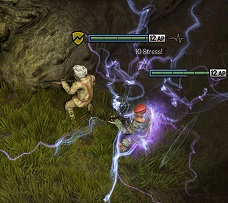Games & Science in the Livingstone-Hope Review
A commissioned report into the skills needed to support the games and visual effects industries, called the Livingstone-Hope Review, was recently published. At its core was a much greater push for computer science. (Link to the PDF) For example:
Bring computer science into the National Curriculum as an essential discipline.
One of the other interesting points was a recognition that games are a great way of interesting schools in the core sciences:
STEM subjects – the sciences, technology, engineering and maths – and art are key to success. Raised awareness of this will alone make these subjects more attractive to young people. But video games and visual effects have a much more direct role to play in addressing the UK’s STEM needs: increasing numbers of schools are recognising that games can be used to improve maths, physics and computer science outcomes in the classroom itself.
Or indeed:
The more fluent that we can make our school children, not just in using the software that sits on their computers but also in using the computer languages that sit behind them, the better. So science and computer science are key skills for VFX and video games.
I also thought that it was of interest that the review builds on the games-science link to see games as a ‘marriage of art and science’:
Video games are now accepted as a genuine art form, capable of evoking emotional responses from players. The industry was built on two of the core strengths of the UK – creativity and high technology. It was a marriage of art and science.
Here’s another quote on the same theme of games being a union of art and science:
Once you have the science, you then need to take an artistic eye to it. While the equation borrowed from physics may accurately describe how the water moves, it is not perfect and needs a subjective and creative decision made about what ‘feels’ right. Once you’ve created the tool in the computer to light the water realistically, you still need the artistic flair of a cinematographer or a painter to make it look great. At every turn, the VFX artist is combining maths, physics, computer science and art to create.
The full report is here (PDF). It is claimed the report is already having an impact.




